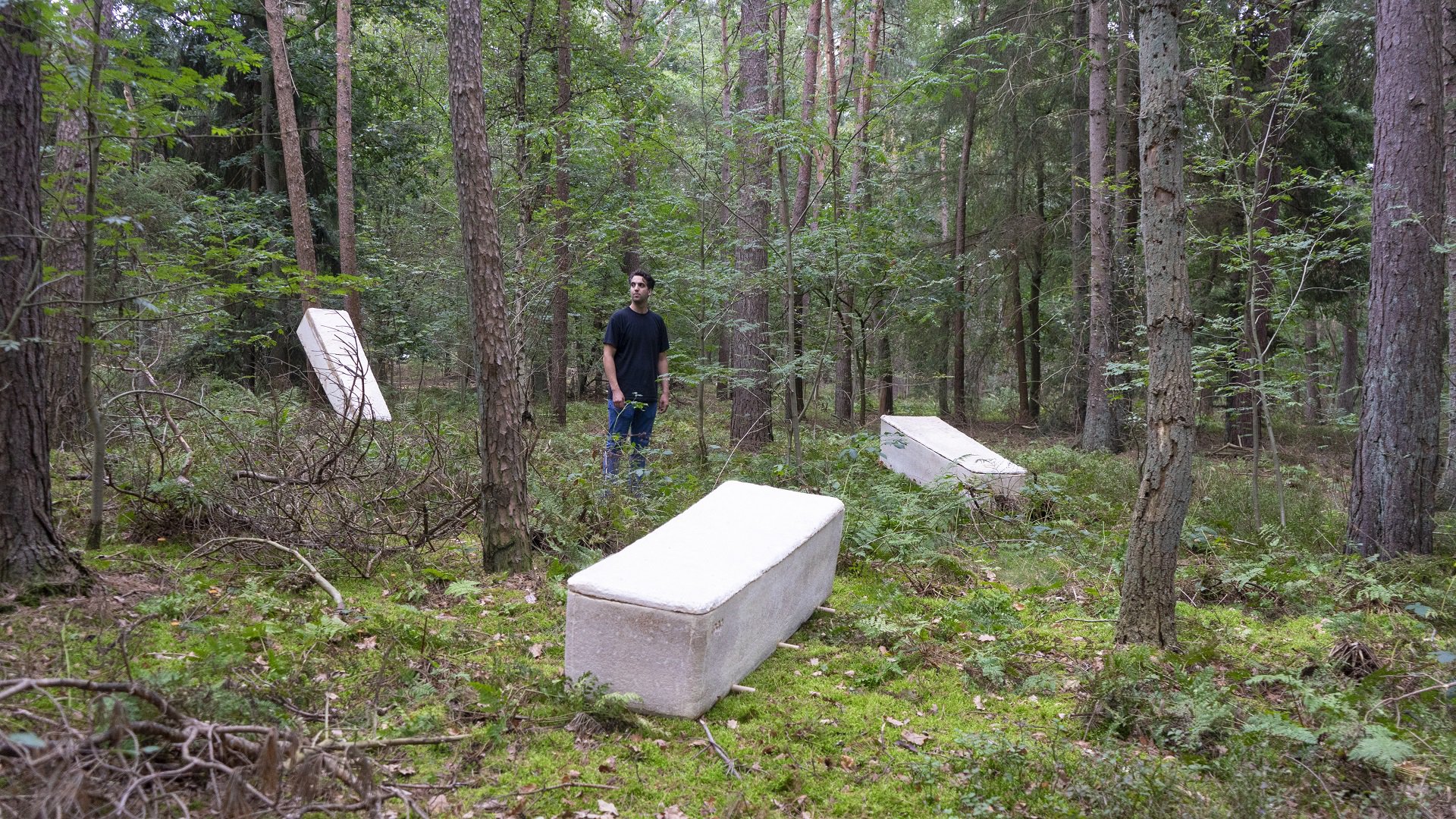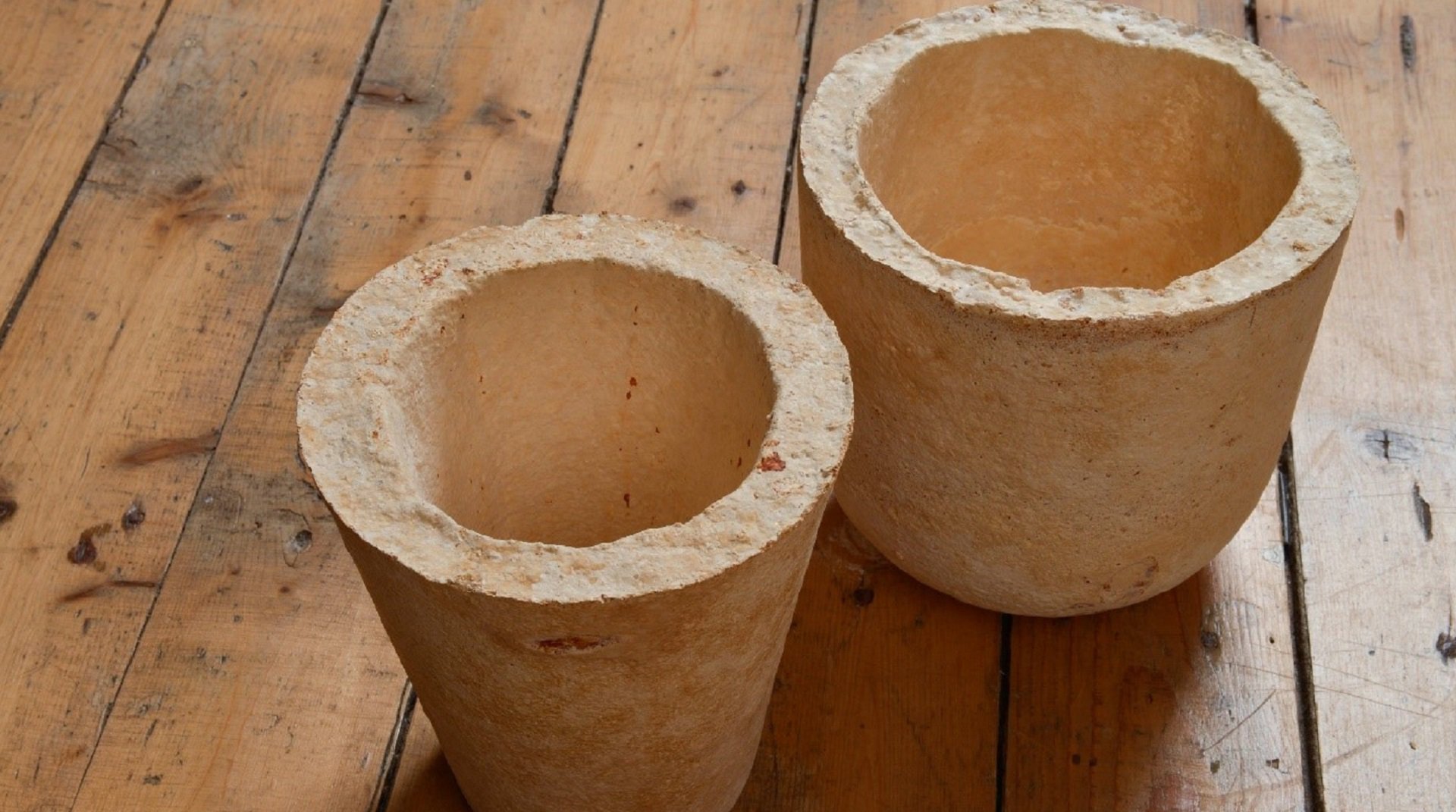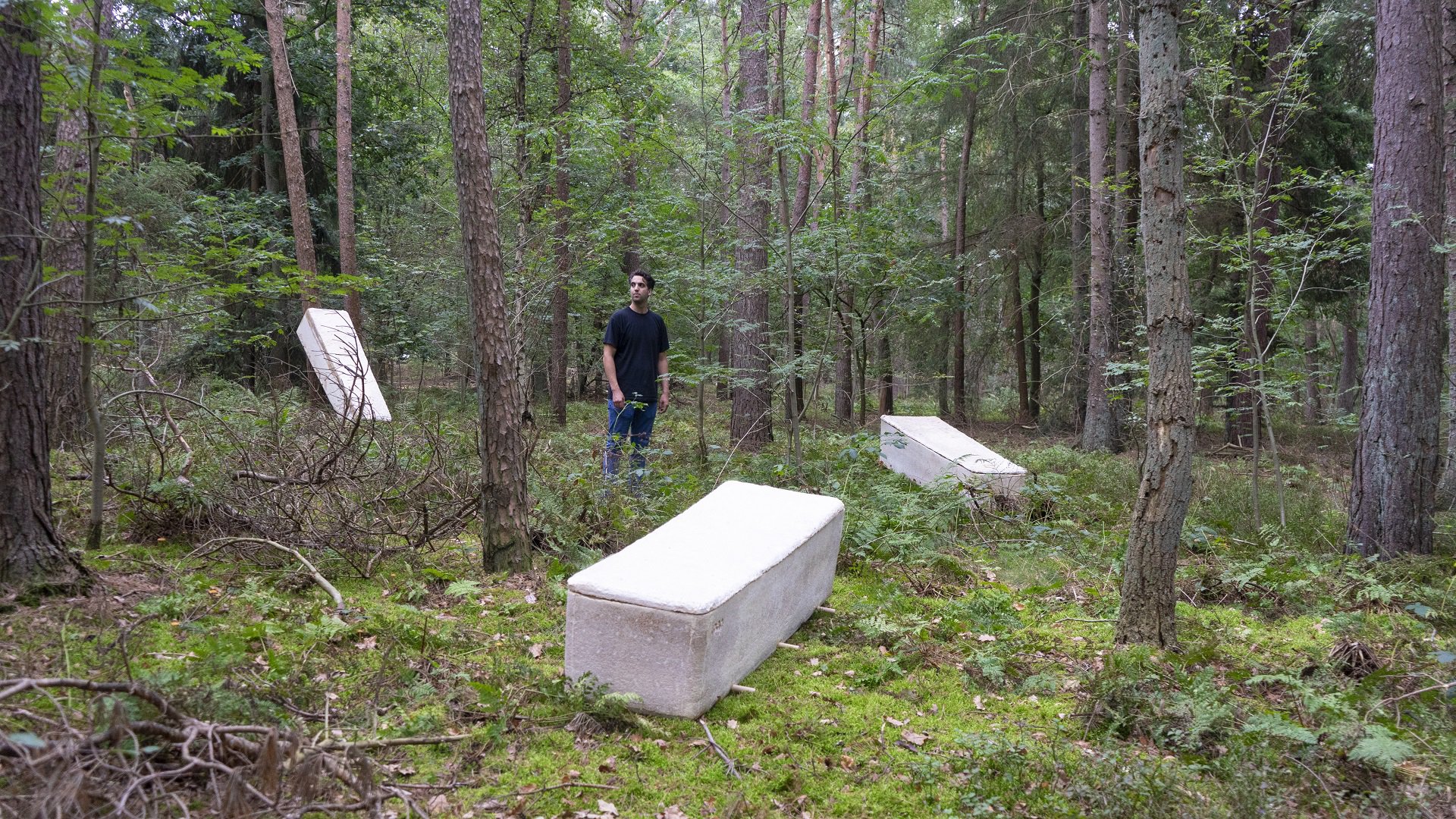
Photo ‘living’ coffin, photo from www.loop-of-life.com.
How is the 'living coffin' made?
The coffin is made by growing fungal threads (mycelium) in a mould. The fungus grows and fills the mould. This way you end up with the desired shape. This technique is not new. Several objects, like stools, pots and all kinds of other utensils are already made in this way. But never for this purpose. The coffin was developed in a collaboration between biodesigner Bob Hendrikx, TU Delft and Naturalis with funeral company CUVO Uitvaartzorg and De Laatste Eer.

These are from the objects from the ‘Fungal future’ exhibition in Micropia.
Part of nature
It takes several years before a human body that is buried is completely decomposed into raw materials that are reused by nature. And if a body is buried in a coffin it takes even longer. The living fungal material of the coffin shortens this process by 2-3 years. This is because fungi convert organic remains very efficiently into basic nutrients for the environment. In this way the body really returns to the earth and the buried individual becomes part of new plant, animal or microbial life.
Would you like to know more about the use of fungi in daily life? Read more about it on this page. Or visit Micropia and discover the setup Fungal Future.

